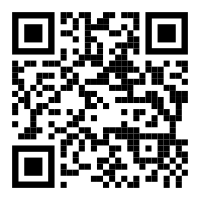How to navigate weight loss after an eating disorder
Changing diet or exercise habits can be triggering for people with a history of disordered eating. Here are some sensitive approaches to safe weight loss after an eating disorder.

Sometimes people who have a history of an eating disorder (like anorexia or bulimia) want to lose weight for perfectly healthy reasons. Maybe it would help with managing a condition, like high blood pressure or diabetes. Or it could help ease symptoms of acid reflux. Unfortunately, many of the usual ways to lose weight can cause unhealthy thinking and lead to a relapse. This includes things like counting calories, exercising more, and weighing yourself every day.
It is possible for people who’ve overcome an eating disorder to pursue a healthier weight safely. But if you do have that kind of history, it’s very important to be mindful about your approach. Getting the right expert help and support along the way is key too.
“Our thoughts, emotions, and behaviors are linked,” says clinical psychologist Rachel Goldman, Ph.D. Goldman is a clinical assistant professor of psychiatry at the NYU School of Medicine. And for people who’ve had an eating disorder, those connections can be tricky to navigate when they want to lose weight.
Eating disorders affect about 29 million people in the United States at some point in their lives. Many more have disordered eating patterns, Goldman says. While plenty of these people do get well, some of their vulnerabilities stay. And they can be triggered by trying to lose weight.
That’s why it’s important to take a sensitive approach to weight loss after an eating disorder. The strategies listed here can help.
Interested in receiving additional tips and insights on managing your conditions, healthy living, and getting the most out of your benefits? Click here to sign up for our free newsletter.
Work with a nutrition or fitness expert (or both).
“Let them know that you have a history of eating disorders and that you want to lose weight,” Goldman says. That way, they can tailor your approach with sensitivity. They’ll focus on different measures of progress.
Redefine success.
“Focus on behavioral or health-related goals, such as reducing cholesterol, not number goals,” Goldman says. “Think about your why: Why do you want to lose weight? Is it to be able to play with your kids? Run a 10K? Have more energy?” Choose a functional goal. Let go of those related to your looks.
Don’t track numbers.
That means don’t count calories or step on the scale regularly. Instead, use other ways to track your progress, depending on your goal. If your clothes are feeling too tight, use changes in fit as a sign that you’re slimming down, Goldman says. Perhaps you’re feeling sluggish and tired too often. In that case, look for differences in how you feel and function. You’ll likely have more energy after changing your eating habits, for example.
“Tell your doctor you don’t want to be weighed,” Goldman adds. “If your insurance company requires it, one option is to turn around on the scale. Say, ‘I don’t want to know the number.’”
Try mindful eating.
Stay away from restrictive diets. Instead, stick to a balanced diet. And eat with an eye toward understanding your body’s needs, Goldman says. You’ll know it’s time to eat or refuel when you feel hungry, Goldman suggests.
In terms of how much to eat, take an intuitive approach by focusing on reaching satiety. That means feeling comfortably full or no longer hungry, but not stuffed. You must listen to your body. You may need to check in with signals you’ve ignored in the past, Goldman says.
Not sure how to get started with mindful eating? You can find helpful resources here:
- Foodandnutrition.org, a magazine published by the Academy of Nutrition and Dietetics
- The Center for Mindful Eating (thecenterformindfuleating.org)
- PositivePsychology.com
Don’t exercise in front of a mirror.
Looking at yourself in motion can bring up critical thoughts in people who have overcome an eating disorder. Instead, “focus on how it feels to be getting stronger or to be using proper form when exercising,” Goldman says. In other words, tune into the results you feel in your body. Another tip: Exercise outside or in a room where there are no mirrors. That makes it easier to keep your mind off how you look.
Stay attuned to your thoughts.
“Pay attention to old thoughts that could be creeping back in. Especially those involving the word should,” says Goldman. Some examples:
- I should weigh myself.
- I should work out more.
- I should eat less.
If thoughts like that pop up, pause and ask yourself: Is this helpful? Do I want to do this? “Acknowledge that these are just thoughts. You don’t need to pay attention to them in terms of changing your behavior,” Goldman adds. “The shoulds take control away from you. You want to take that control back.”
Watch for signs of trouble.
Remember: “You are the best expert on yourself,” Goldman says. You’ll know if you start feeling troubled by your thinking. You may catch yourself falling back into old behaviors like obsessive calorie counting or weighing. Those are signs that you’re veering into unhealthy territory and you’d benefit from seeking help from a therapist, Goldman says. Pay attention to them and reach out to get the support you need.
The Wellframe digital health management app can help connect you with the mental health support and services you need. Many health plans offer Wellframe to their members for free. To find out if you have access to Wellframe, reach out to your health insurance provider.
